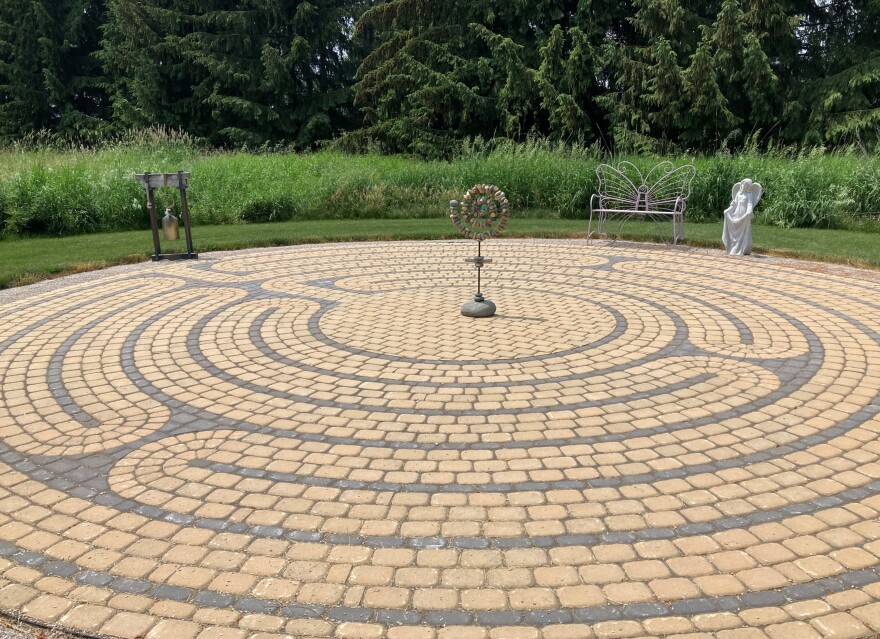When you hear the word “labyrinth,” different things may come to mind: meditation, a walking path, a maze or maybe a mystical, new age gimmick.
However, during the Middle Ages, labyrinths were built in cathedrals to allow people to make a symbolic pilgrimage to Jerusalem without having to leave the building.
Now, over 600 years later, there’s a movement to bring labyrinths into spaces as a tool that can reduce stress and quiet the mind.
Lauren Artress founded Veriditas and helped create the Labyrinth Society, two international organizations dedicated to educating people about these paths.
She said she introduced the first labyrinth to the U.S. in 1991 to her own church in San Francisco - in response to AIDS epidemic.
“People were dying everywhere," Artress said. "We needed something people could do together nonverbally, walking together, prayerfully together, because people were so frightened.”
The need for a tool - that could bring solace and comfort to people - pushed Artress toward labyrinths.
She said there are parallels between the AIDS epidemic and the current pandemic, adding that labyrinth resurgences are known to pop up in history during times of rapid change.
“It's kind of a stabilizing force that comes up and then people realize, ‘oh, I could use a labyrinth to quiet my mind, find my balance in this very unbalanced time,’" Artress said. "Needless to say, we're in one of these times that are very, very challenging.”
With the help of the internet and more durable building materials, things like treated wood and easy access to concrete, Artress said labyrinths are going to be around much longer than any of us.
Karen Price, a former Michigan pastor, connected with labyrinths nearly 25 years ago.

Price has installed a labyrinth in the last three homes she’s lived in. Her current one, in Port Austin is open to anyone who wants to walk it.
“It’s interesting because people don’t really need to know what it’s about - they’re just kind of drawn to it and curious about it, so we have lots of people stop by and walk," Price said. "They’ll come because they’re hungry spiritually, they’re stressed, or they’re looking for answers and struggling.”
As a Christian, Price said she walks her labyrinth in prayer, but she said people of all religions need to be able to come together, and labyrinths are one way to do just that.
“The experience is bigger than one faith," Price said. "It’s big enough to encompass whatever you’re there for. I think we have to be able to (come together) or we’re going to destroy the world someday because we can’t understand each other.”
Since Lauren Artress introduced labyrinths to the U.S. 30 years ago, there are nearly 5,000 registered across the country today. Worldwide, there are some 7,000 in 86 countries.
In Michigan alone, there are more than 100 registered labyrinths, according to the World-Wide Labyrinth Locator.
In response to people who think labyrinths are “new age” nonsense, Price reminds people that they’re actually “middle age,” and she encourages people to just try and walk a labyrinth out.
She said she hopes that hers can just be a “happy space” for people looking to find peace.
This story was produced as part of the Michigan News Group Internship. A collaboration between WCMU and eight community newspapers. Teresa Homsi is based at the Huron Daily Tribune this summer. This story ran in the June 15 paper.


